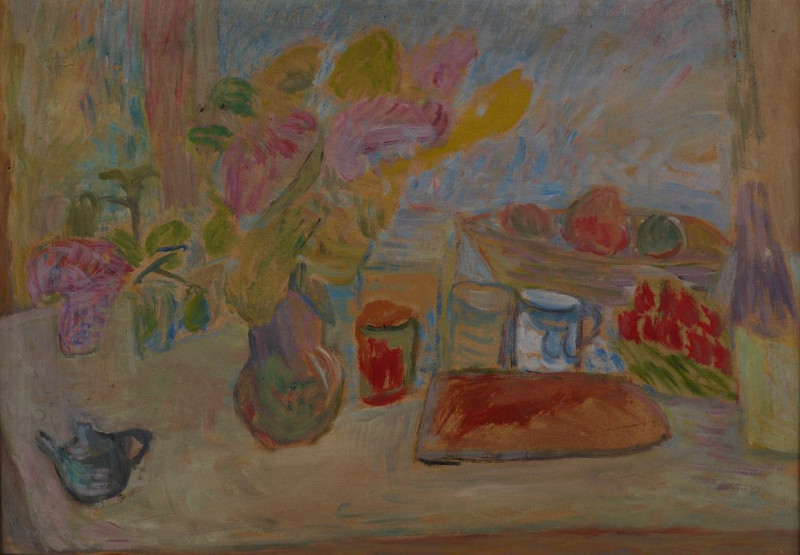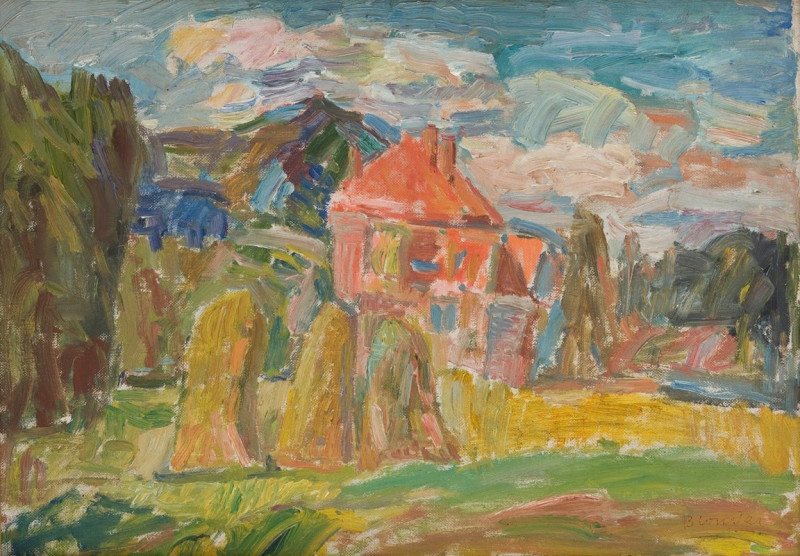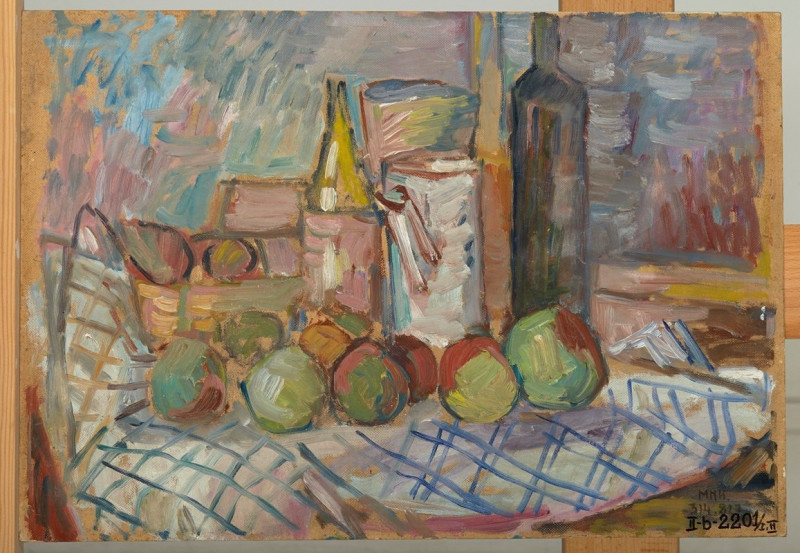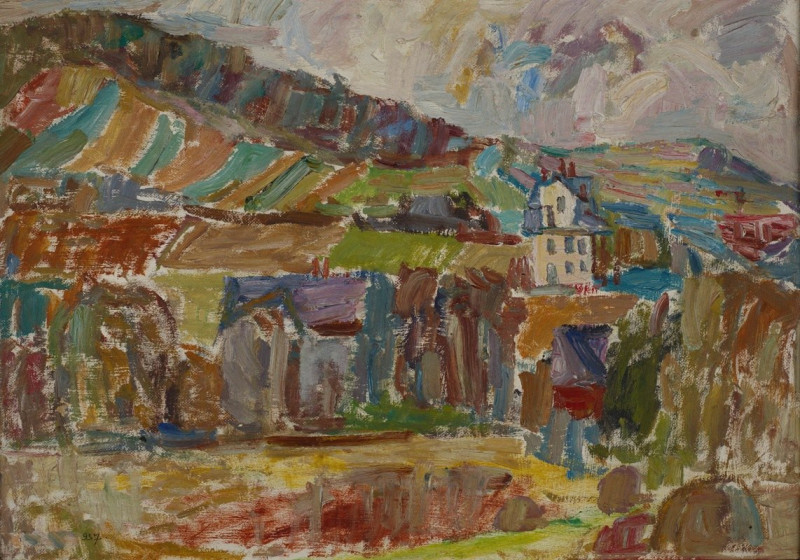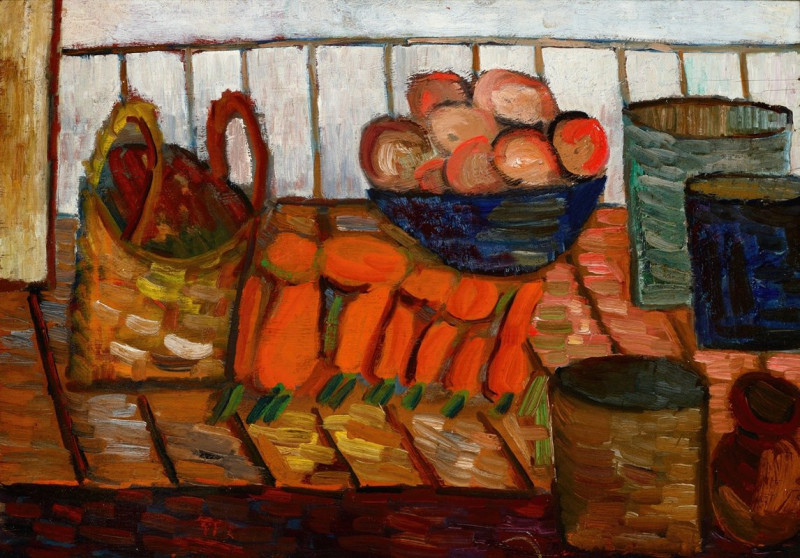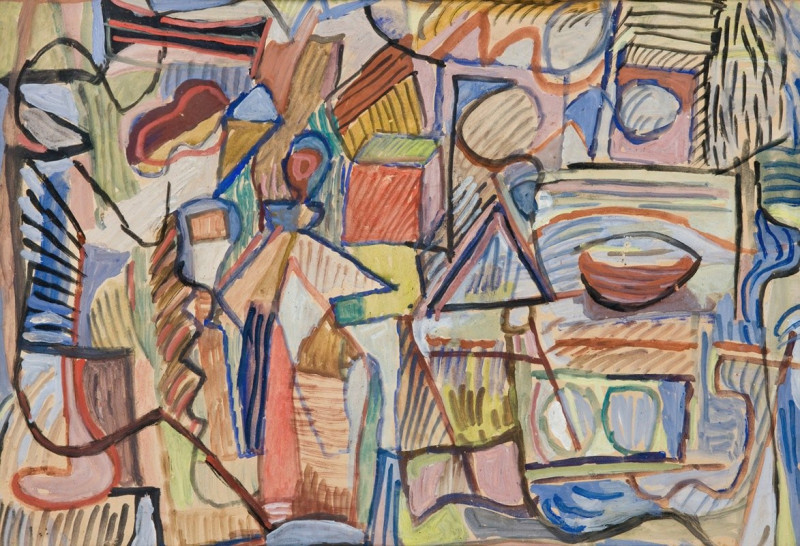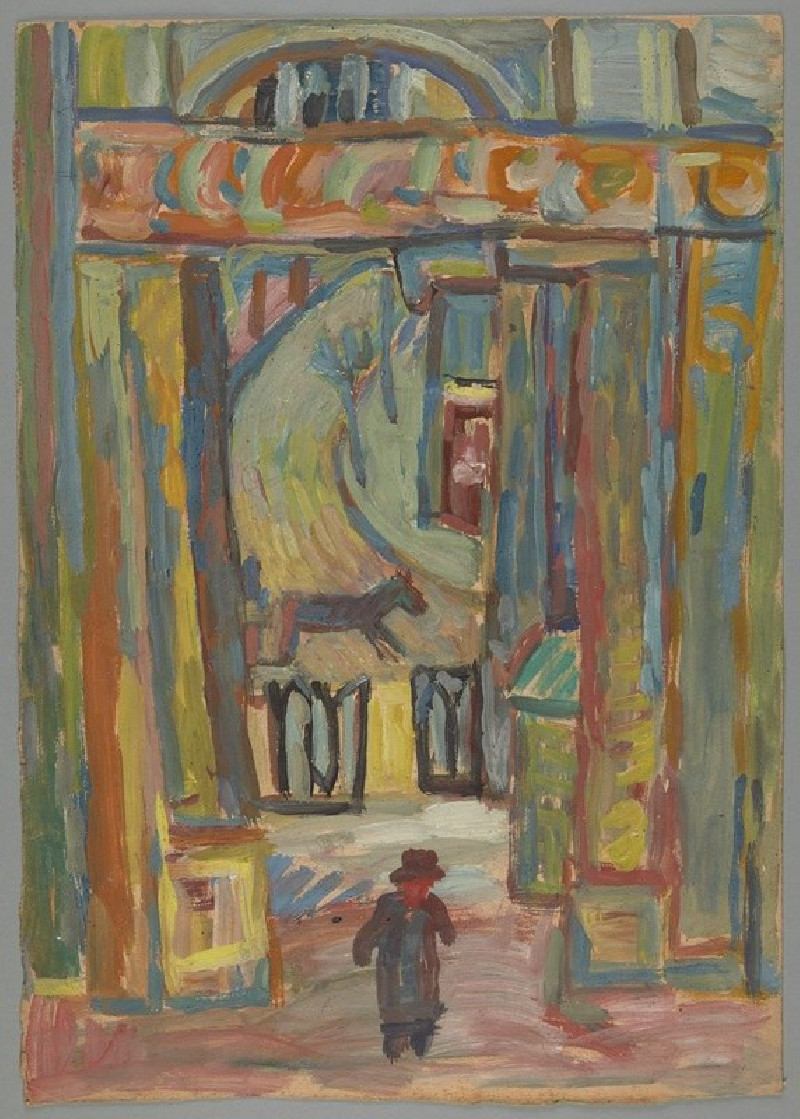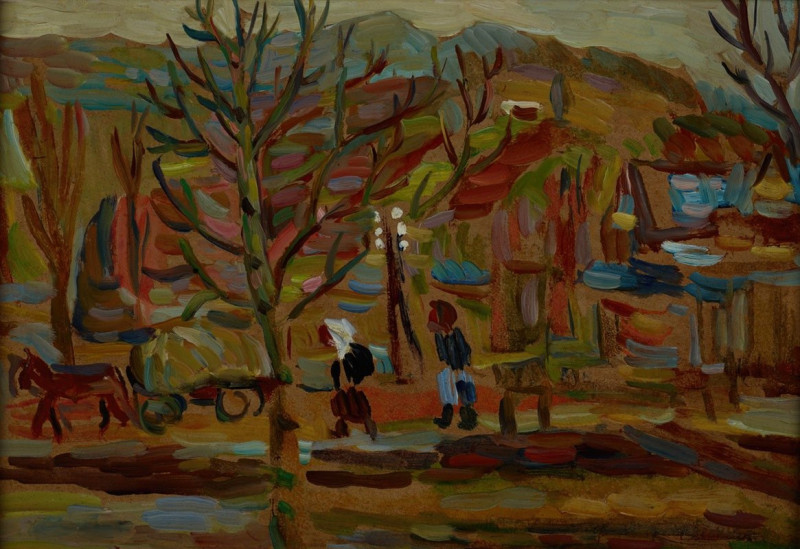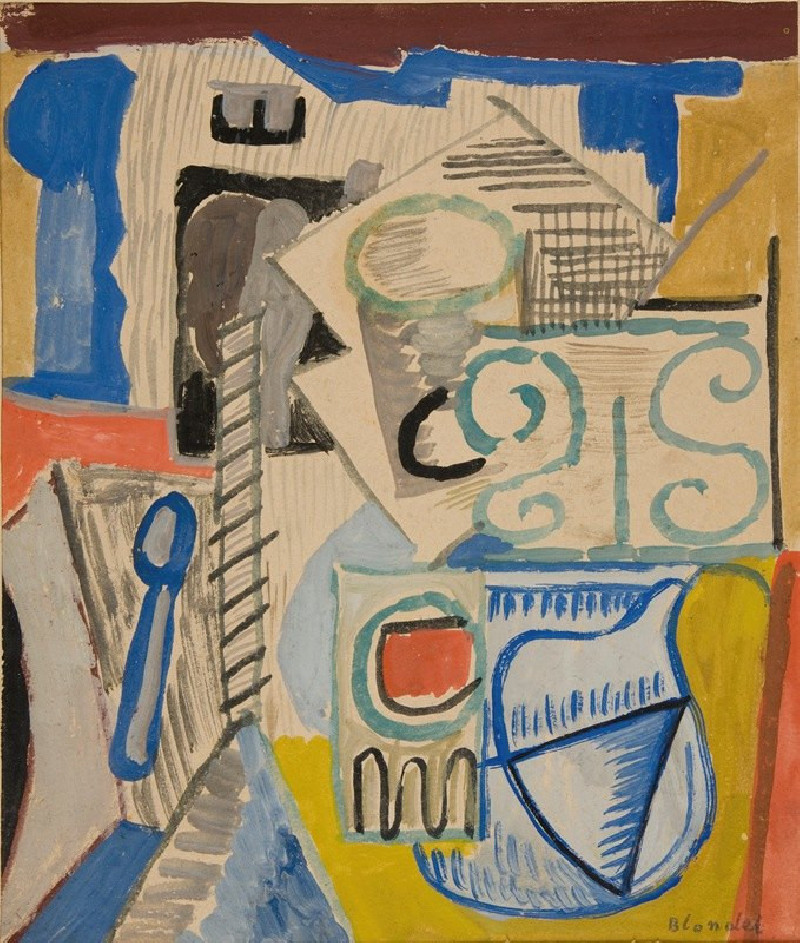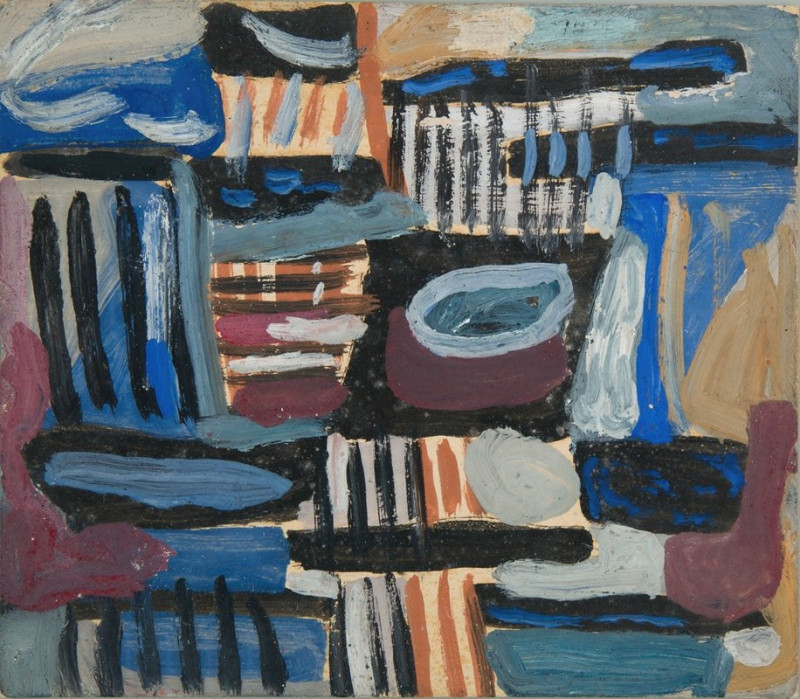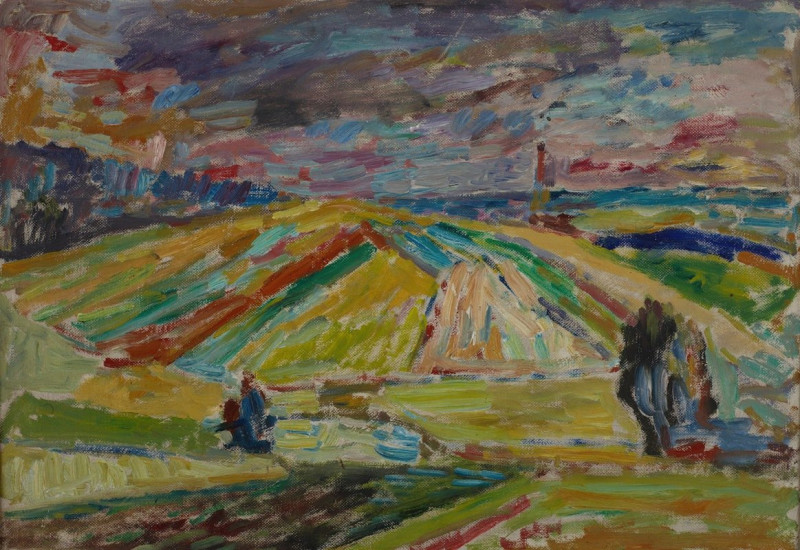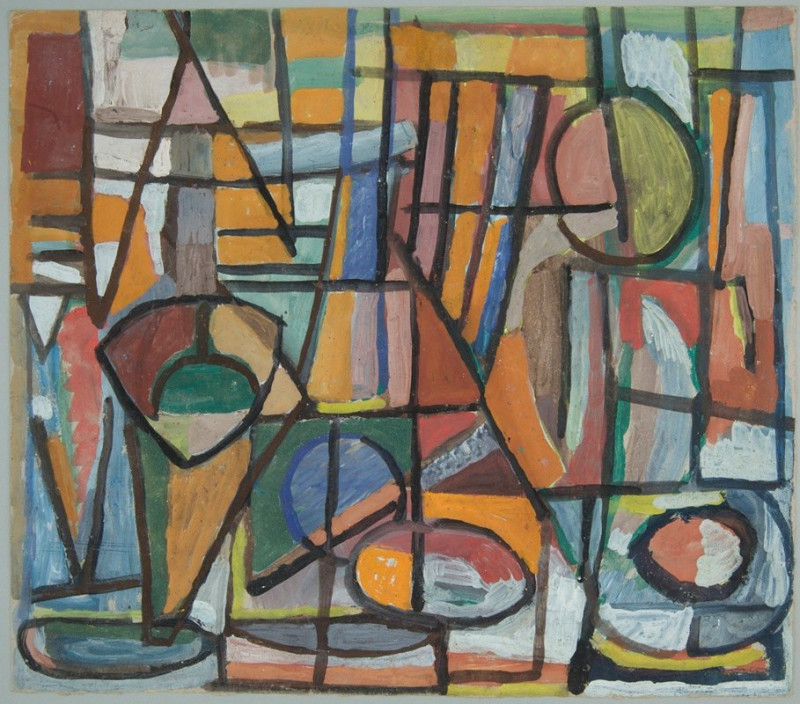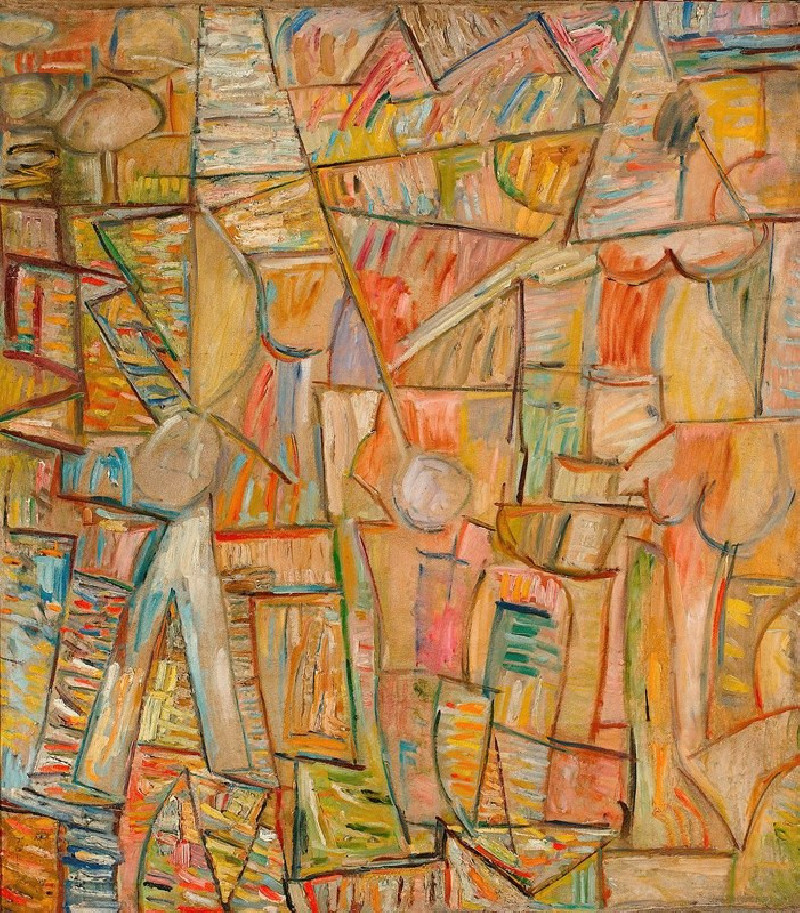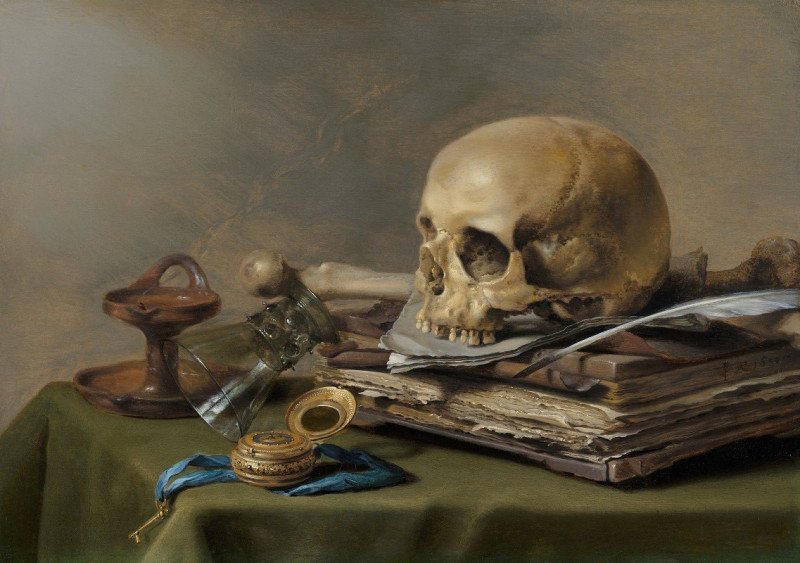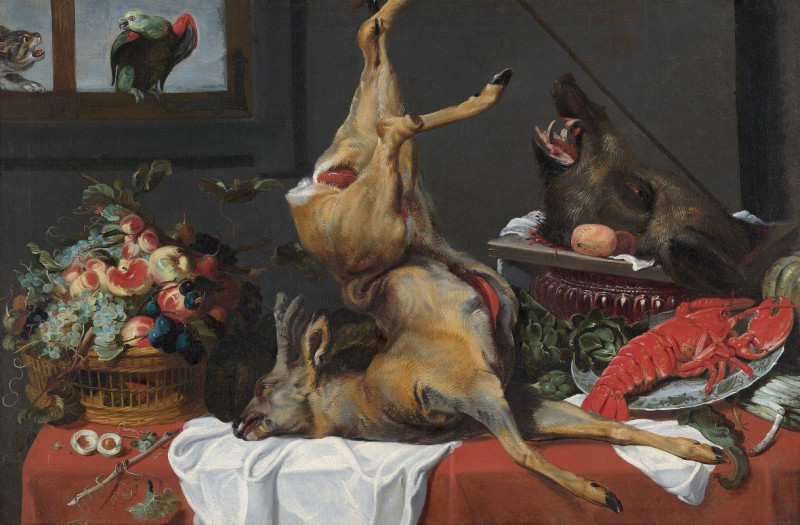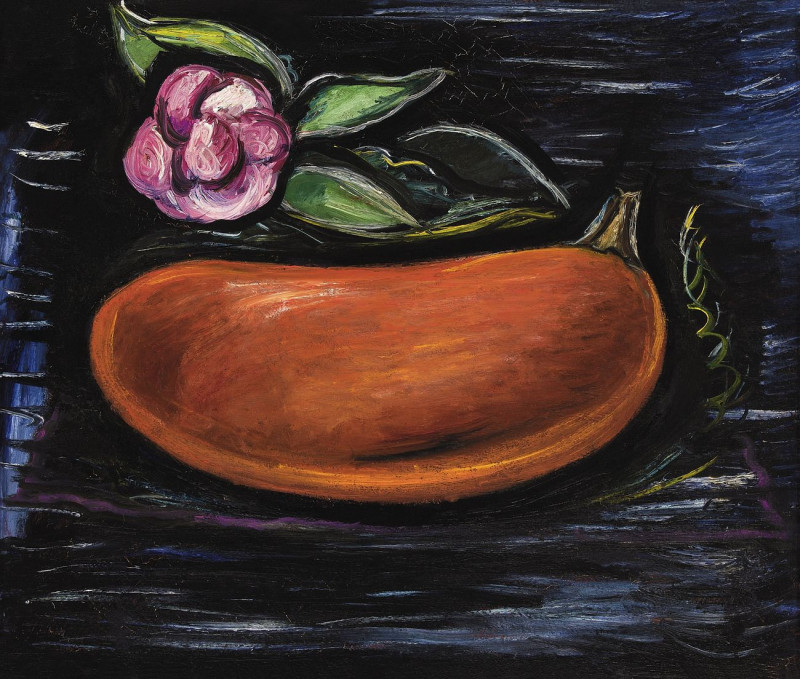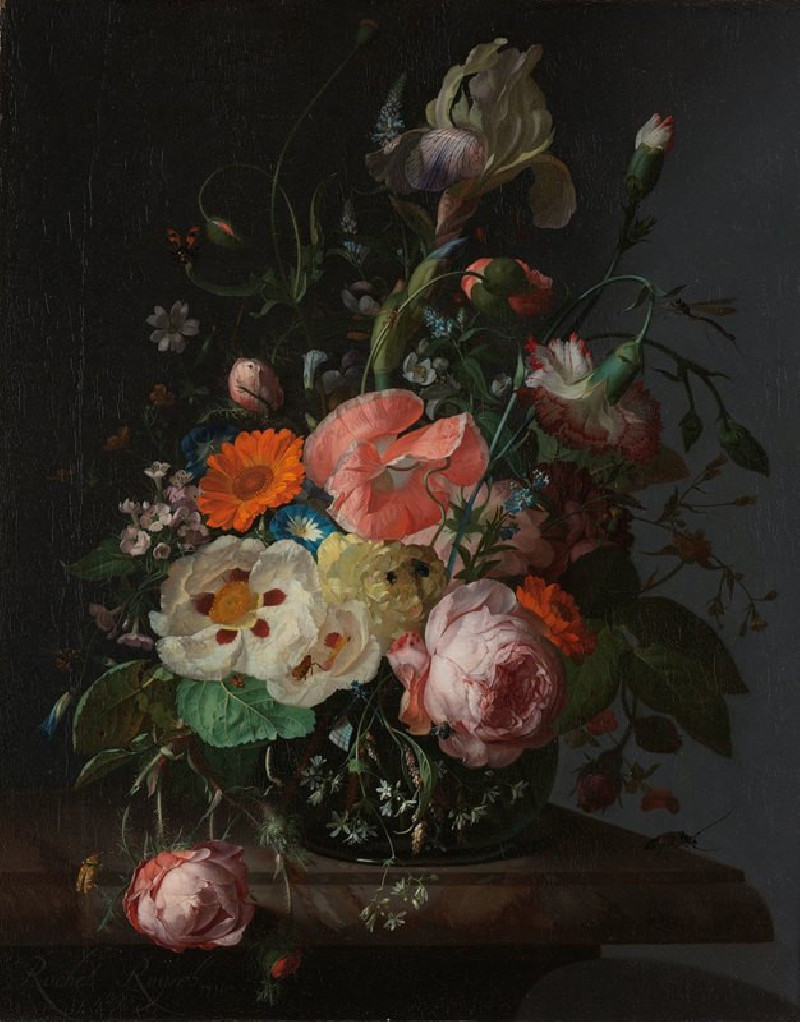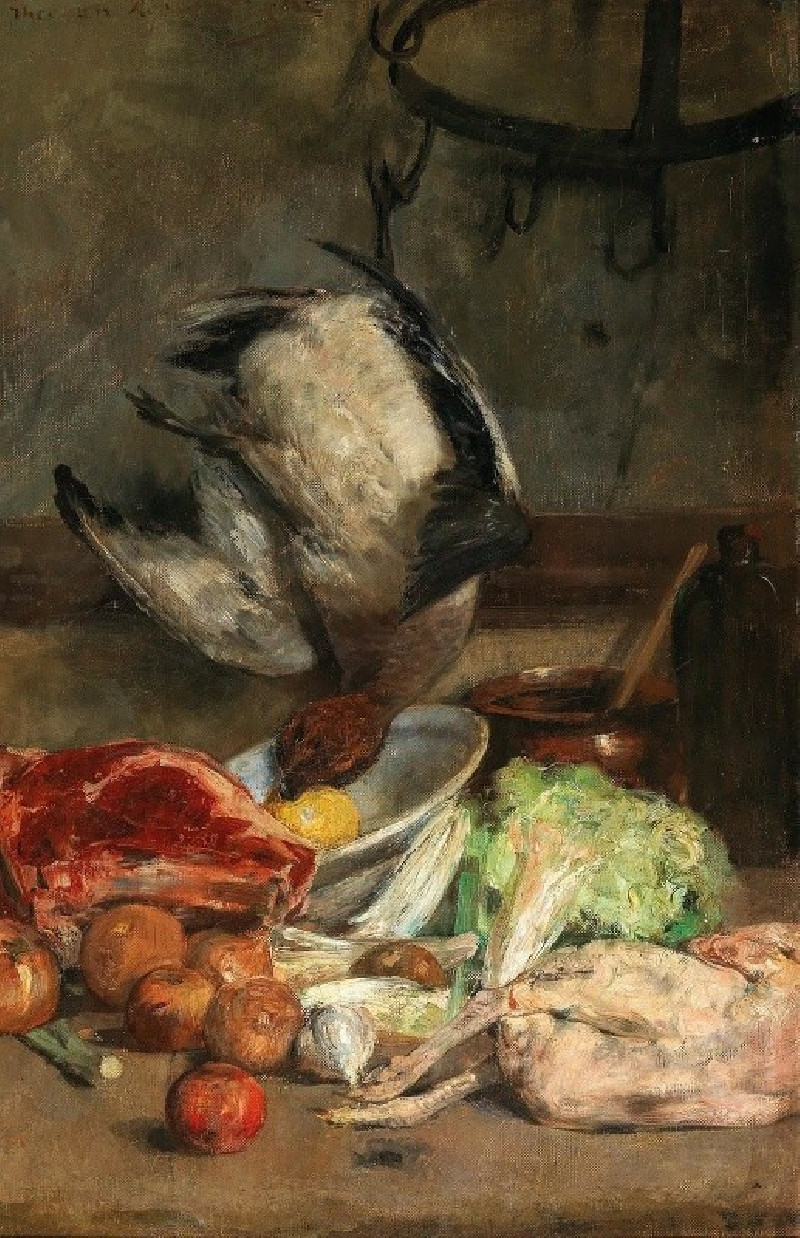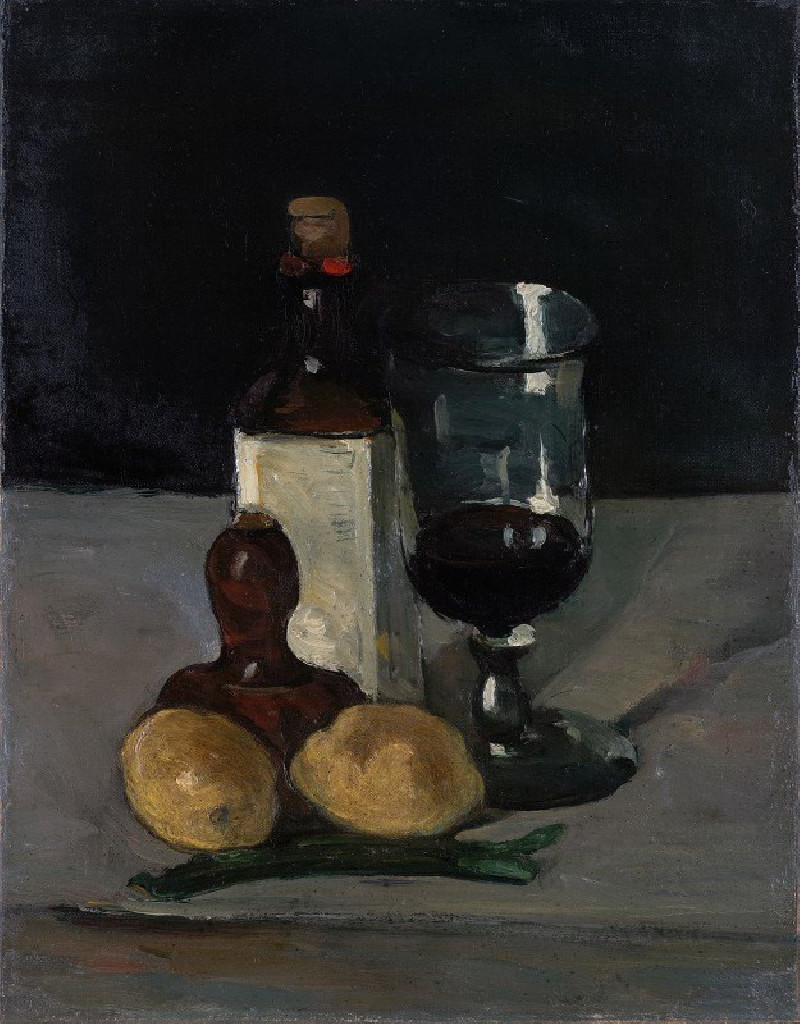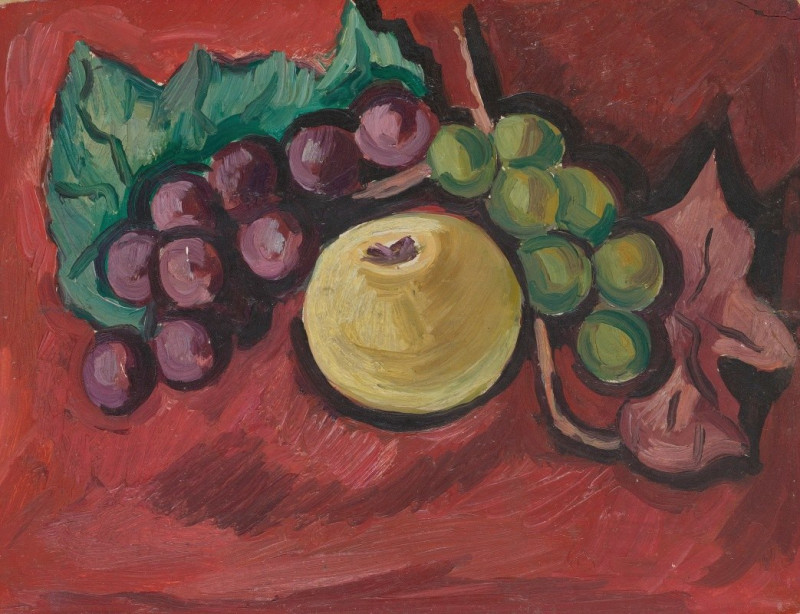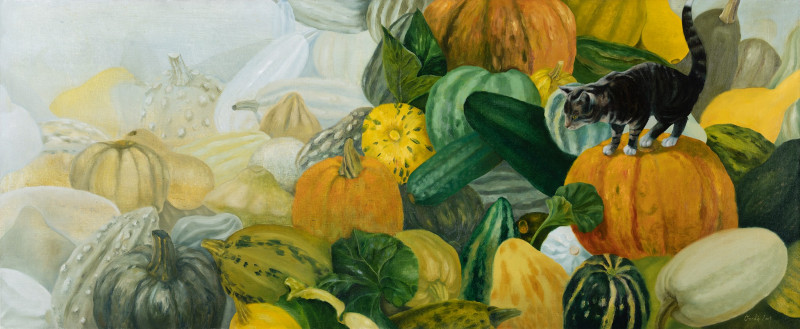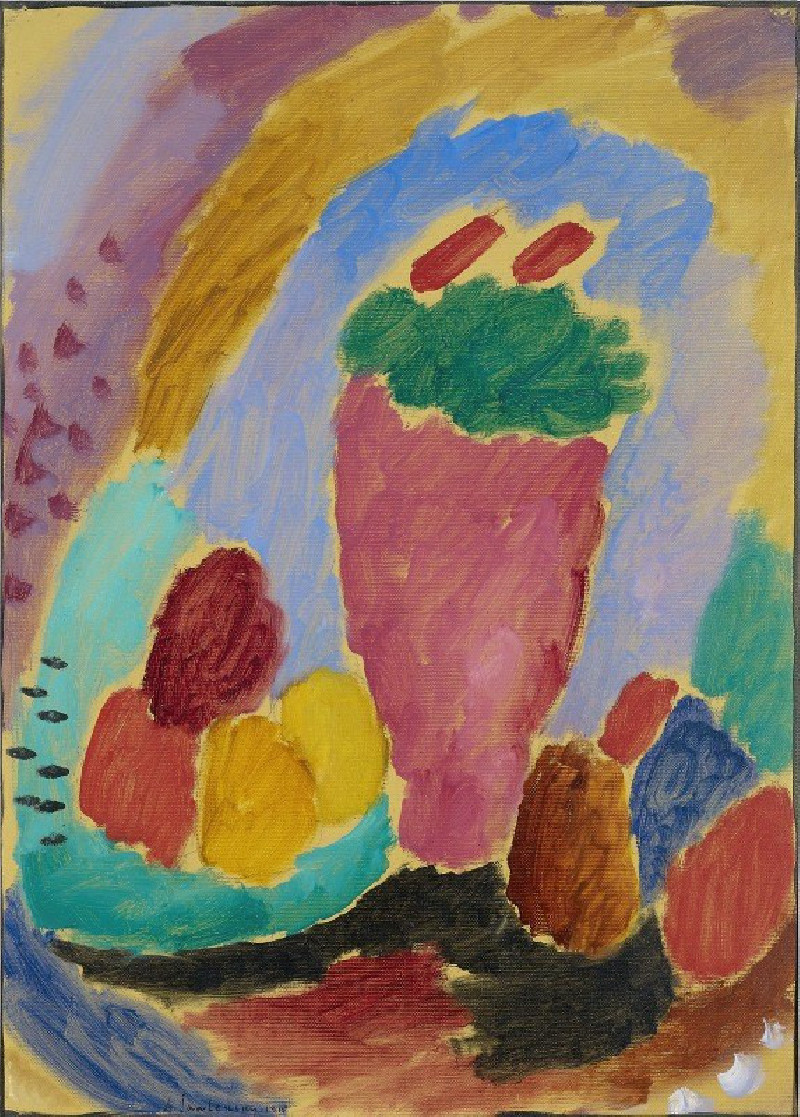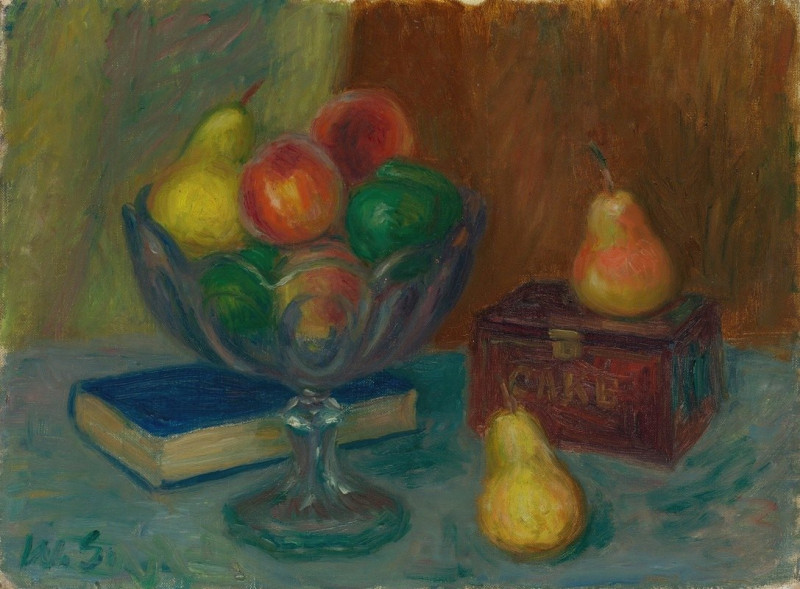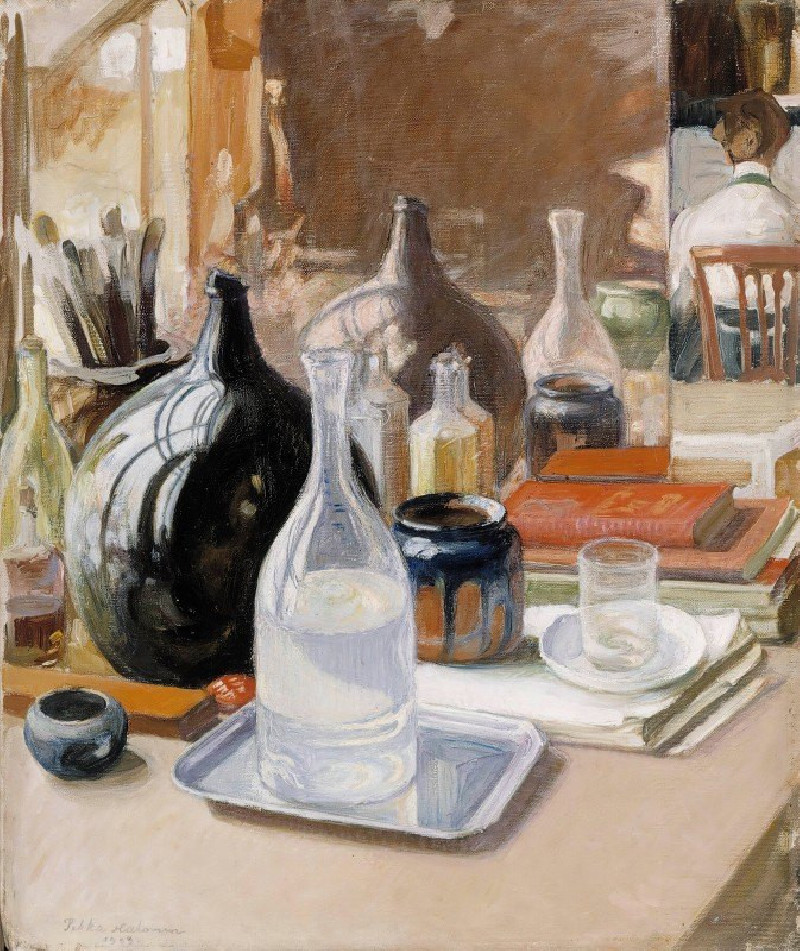Still Life with Bread (1937)
Technique: Giclée quality print
Recommended by our customers
More about this artwork
Step into the vibrant world of Sasza Blonder with his captivating 1937 piece, "Still Life with Bread." This painting invites viewers into a cozy, domestic space, filled with the simple pleasures of daily life. The composition is a rich tapestry of textures and colors, showcasing a rustic loaf of bread as its central figure, symbolizing sustenance and the earthy roots of home life.Around the bread, the table is adorned with various household items that add depth and narrative to the painting. A pitcher, colored in shades of cool blue and teal, provides a counterbalance to the warm, welcoming tones of the bread. Nearby, a vivid red jar adds a pop of color, further enlivening the scene. These elements are complemented by the soft, pastel background, creating a dream-like quality that floats around the objects, almost as if time is standing still.Off to one side, an arrangement of plants and flowers in muted pinks and greens breathes life into the composition, suggesting the presence of nature indoors. Beyond this, a hint of a window reveals a glimpse into the outside world, where soft blues and creams paint a tranquil day. This window not only connects the indoors with the outdoors but also fills the scene with a light that enhances the interplay of colors."Still Life with Bread" is more than just a depiction of objects; it is a celebration of the everyday, a snapshot of a moment filled with tranquility and the beauty of the ordinary. Through Blonder's expressive brush strokes and harmonious color palette, viewers are reminded of the comforting constancy of home and the simple joys that can be found therein.
Delivery
Returns
Aleksander (Sasza) Blonder was a Polish painter of Jewish origin .
He went to Paris for the first time in 1926. He studied architecture in 1930–1932 at the École nationale supérieure des beaux-arts in Paris and studied painting at the Academy of Fine Arts in Kraków from 1932 to 1936 with Teodor Axentowicz , Władysław Jarocki and Fryderyk Pautsch.

